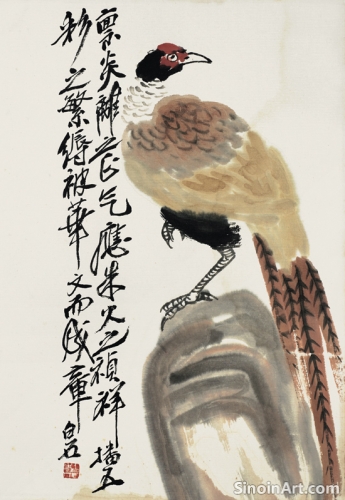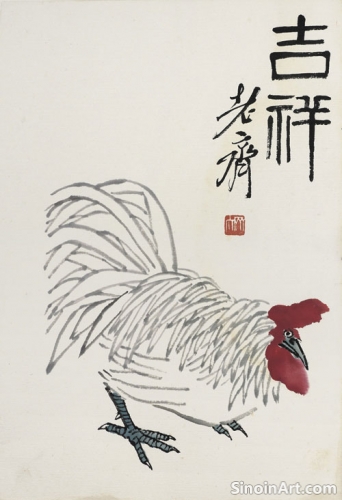The Legacy of Xieyi: From Tradition to Innovation
|
Xieyi painting, while deeply rooted in ancient Chinese traditions, has continuously evolved over centuries, adapting to changing cultural contexts and artistic sensibilities. Its legacy is one of resilience and dynamism, reflecting a constant interplay between the respect for tradition and the drive for innovation. From its origins in scholar painting to its contemporary manifestations, Xieyi continues to be a vital force in Chinese art.  The origins of Xieyi painting can be traced to the literati artists of the Song Dynasty (960-1279 CE), known as scholar-painters. These artists, who were often government officials, intellectuals, and poets, sought to express their personal feelings and philosophies through their art. They moved away from the rigid formality of court painting and embraced a more spontaneous and expressive style. This period laid the foundation for the future development of Xieyi.  During the Yuan Dynasty (1271-1368), the Xieyi style continued to evolve, with artists emphasizing the use of bold brushstrokes and simplified forms to convey the spirit of their subjects. The influence of Chan (Zen) Buddhism, with its emphasis on spontaneity and inner truth, further enriched the expressive language of Xieyi painting during this time, and continued to influence it. This created a natural freedom in style.  Throughout subsequent dynasties, such as the Ming and Qing, Xieyi painting continued to develop, with artists exploring new themes and techniques while remaining true to the core principles of freehand brushwork and expressive ink. During the Qing Dynasty there was further experimentation and evolution, but it still remained true to traditional core principals. In the modern era, Xieyi painting has witnessed a renewed vitality, with artists pushing the boundaries of tradition and exploring contemporary themes and abstract forms. Contemporary artists are now experimenting with mixed media, digital techniques, and other elements that add new interpretations to the form. The versatility of Xieyi allows for continued evolution and growth. The enduring legacy of Xieyi painting lies in its ability to transcend time and culture. It is a testament to the human desire for expression, an ongoing conversation between the past and the present. The art form continues to inspire artists and audiences around the globe with its expressive power, freedom and creativity. It’s a reminder that art is always in a state of becoming. |
Tag : Xieyi Painting History, Chinese Art Evolution, Literati Painting, Song Dynasty Art, Modern Xieyi
Related information
- The Essence of Xieyi: Capturing the Spirit
- The Significance of Brushwork in Xieyi Painting
- The Spiritual and Philosophical Dimensions of Xieyi
- Xieyi Figures: Capturing the Essence of Humanity
- Xieyi Painting and its Global Influence
Xieyi, or freehand ink wash painting, emphasizes the expression of the artist's spirit through simplified forms and bold brushstrokes, using calligraphic techniques and negative space to convey the essence of a subject.
Brushwork is at the heart of Xieyi painting, serving as the primary means of artistic expression. The brush is not merely a tool; it is an extension of the artist’s hand and emotions. Mastery of the brush is essential to conveying the spirit and essence of a subject.
Xieyi painting is deeply rooted in Chinese philosophy, particularly Daoism and Chan Buddhism, emphasizing the importance of spontaneity, mindfulness, the pursuit of qi or vital energy, and the spiritual significance of emptiness in art.
While less common than landscapes and flowers/birds, figure painting (人物画, renwuhua) also has a place within the Xieyi tradition. These works often focus on capturing the character and spirit of the individual rather than simply portraying a likeness. The focus is on expression and inner qualities.
Xieyi painting has influenced artists and art movements globally through its emphasis on spontaneity, expression, and suggestion, with its impact seen in abstract expressionism and many contemporary approaches to the application of ink, form, and the expressive potential of line, reflecting its enduring power and universal appeal.